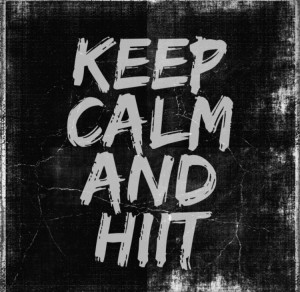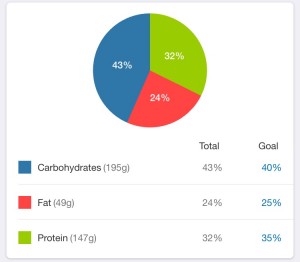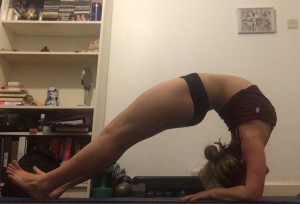 So what’s new in the diabetes world with me? I had a big high the other day which came as a result of an occlusion in my pump. Hypers really effect my mood, I felt somewhat depressed, tired and hungry. Even still, I got my workouts in and continued to eat as normal. It came down, eventually. I also had a “no tracking” day where I only counted my carbs instead of all of my macros like I usually do. It was nice to eat without thinking about it too much. It would be great if I didn’t have to count carbs for a day, but it’s cool. Anyway, other than training, teaching, personal training and rehearsals I have been finalizing a few chapters for my new book which should hopefully be out in the next couple of weeks. It’s about living a healthier lifestyle with diabetes; how to adopt the right mindset and what path to take that would work best for you. I don’t believe in people who promote a “one diet or exercise regime fits all” kind of lifestyle. It’s unrealistic, plus I think teaching people how to make better choices around food and exercise is a much more productive approach to long lasting change.
So what’s new in the diabetes world with me? I had a big high the other day which came as a result of an occlusion in my pump. Hypers really effect my mood, I felt somewhat depressed, tired and hungry. Even still, I got my workouts in and continued to eat as normal. It came down, eventually. I also had a “no tracking” day where I only counted my carbs instead of all of my macros like I usually do. It was nice to eat without thinking about it too much. It would be great if I didn’t have to count carbs for a day, but it’s cool. Anyway, other than training, teaching, personal training and rehearsals I have been finalizing a few chapters for my new book which should hopefully be out in the next couple of weeks. It’s about living a healthier lifestyle with diabetes; how to adopt the right mindset and what path to take that would work best for you. I don’t believe in people who promote a “one diet or exercise regime fits all” kind of lifestyle. It’s unrealistic, plus I think teaching people how to make better choices around food and exercise is a much more productive approach to long lasting change.
A few of you have asked about my reverse diet progress so here it is… Since the beginning of my reverse diet my lifting has gone heavy.
- My 1 rep max for leg press is 140kilos which is more than double my weight
- My chest is 30lbs for my working sets. Will try my 1RM and let you know.
- Lunges I keep around 32 for working sets with dumbbells
- 16lbs working sets for my one arm row and 80kilos is my 1 rep max on lat pull down. Working set is around 50.
- I am yet to try my max, but I am in a good lifting 50 as working sets. I will get back to you with my 1RM.
I think at this stage in the game, you know with my reverse diet, I am unsure whether to continue increasing or whether I should do a mini cut. I mean, I love the strength and I am definitely seeing the results of the consistency, but then there is a part of me that kind of wants to go back to old ways of eating less to see instant results. i.e. a dropping number in the scales(even thought when I am thinking rationally I know this does not matter), especially when I know I have performances coming up. There is some sort of battle in my head between, eat for your body goals which is to look athletic and strong or eat to look like a dancer who is thin. I don’t want to be thin, but sometimes I convince myself I do. It’s very strange. Anyway. The plan was to continue to reverse for the next 2 weeks and then see how I feel. If I do this I would then be eating 2000 calories per day, which is still less than I should be eating at maintenance. So far, along with the strength gains, my waist and hips measurements have gone down and my clothes fit perfectly around my waist. However, my trousers definitely feel tighter around my legs and bum. That a good thing though, hey?
Be sure to follow my social media pages so you don’t miss another post. Facebook, YouTube, Instagram and Twitter.
Rowena x







